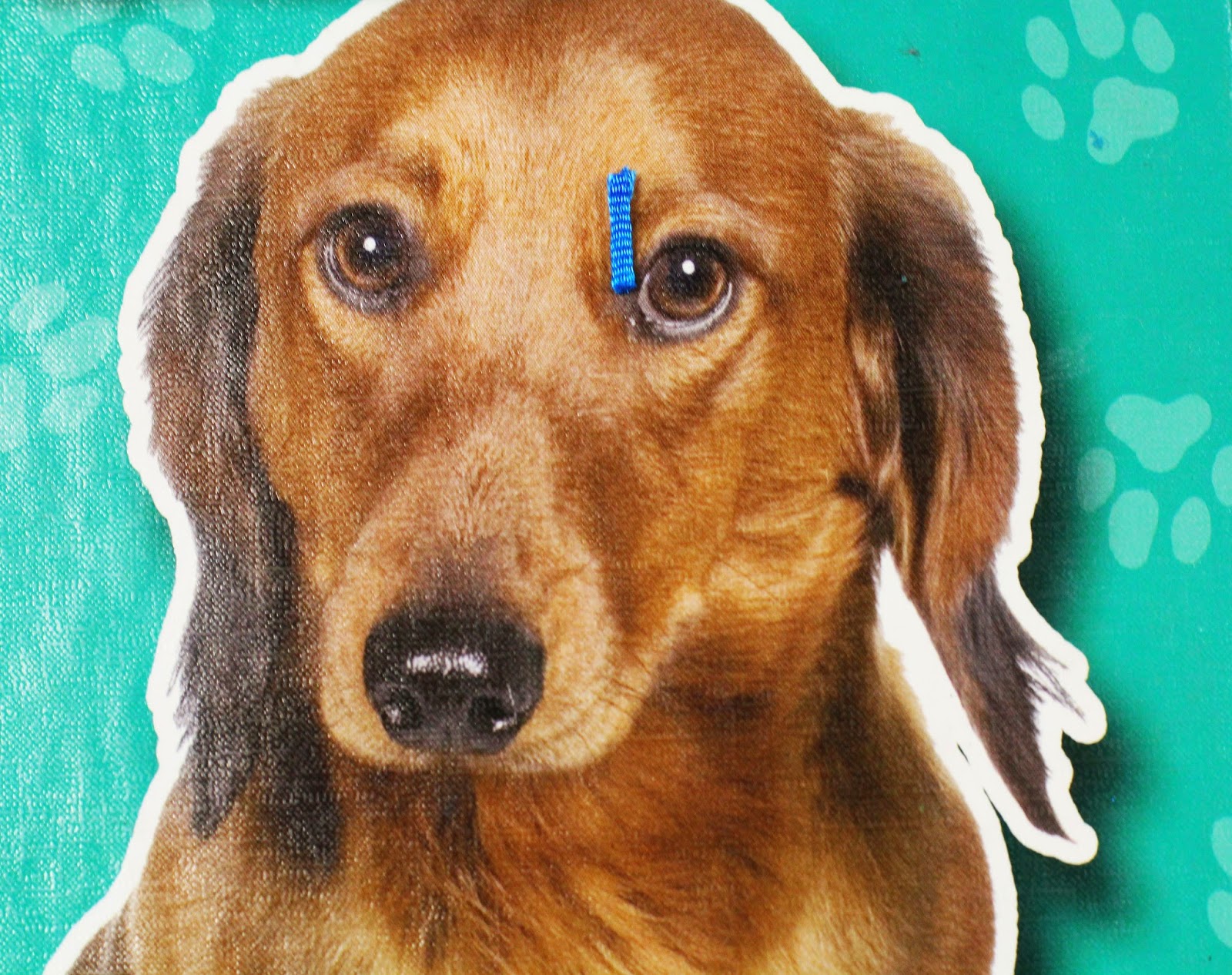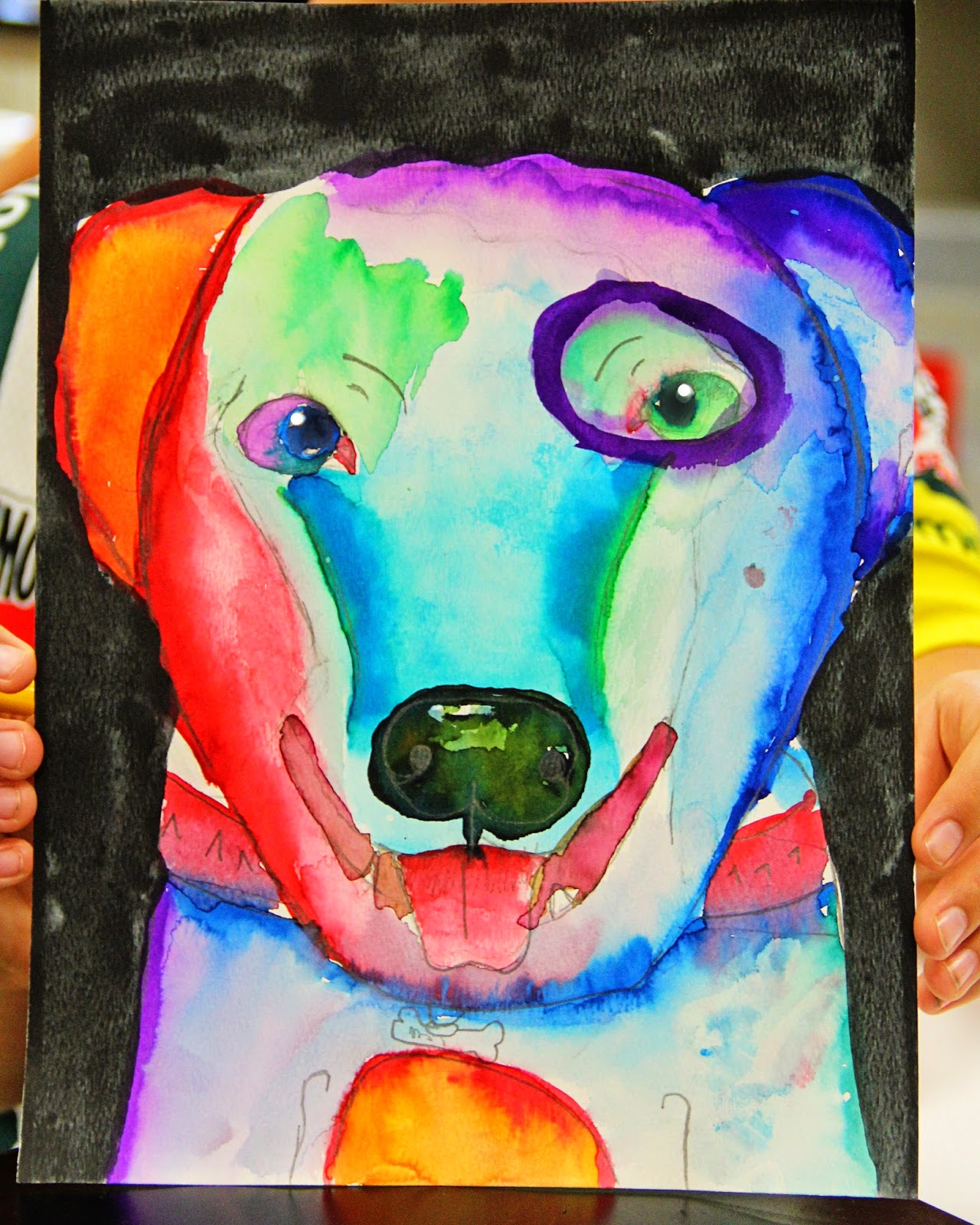My fourth and fifth grade students have just finished a project for the Dog Show that is coming to town this summer!!! Most kids love dogs so this project is a big hit!! Students could bring a photo from home, but they had to draw a dog that was looking straight on. This is MUCH easier than a 3 quarters view with the head turned because a straight on face is symmetrical.

Also for a little shameless bragging, another inspiration was our new pug that we welcomed into our family this Spring! Her name is Birdie and fits in really well with BunBun and the girls!
I only had her for two days before I needed to paint her...thus the idea for this project happened!!
If you have ever drawn dogs, it is very hard to get the face
proportional to actually look correct. With this project I FINALLY came up with a way that most kids were VERY successful in creating a drawing that looked lifelike!!!
1. First they chose a large photo of a dog from a book. The dog must be looking straight forward.
Measure the eye with a string and cut it
2. Then cut a string a bit larger and with a different color to use for the drawing. Students use the strings for one to one proportion to measure each part of the dog on the photo, then transfer that measurement with the larger string onto their drawing.
The eye must have an iris, a pupil, and a reflection of light
3. Ok, now measure how many "eye spaces" are the eyes from each other. Most dogs eyes are 2 1/2 eye spaces apart, but some are further
transfer the information now to the drawing using the green "eye space" to place the eyes the correct distance apart
4. Now measure how many "eye space"s is the nose. Many of the dog;s noses were two eye spaces wide!
5. Now measure how many "eye spaces" from the corner of the eye to the top of his head on the photo, and then count and measure on the drawing. THIS was what made the biggest difference in their drawings! Most students always make the top of the head too close to the eyes!
6 Next measure the eye to the head. Students can continue measuring the ears and neck if they want. This method REALLY makes a huge difference.
We did a rough draft on zerox paper, then our final draft on watercolor paper
Students could make a colorful dog with a neutral background or a realistic colored dog with a dreamylike colorful background. This student started out with colors, then decided to paint his dog like the one in the book. It turned out quite fabulous!!
Students paint every color with value going from dark on the edge to light in the middle. They dry their brush before they dip it in paint to get the dark value on the edges, then rinse the paint out and use just water to blend the dark edge to a light value in the middle
I encourage the kids to never use a solid black. I always like them to add color to their black or create their own black by mixing
This face is SO CUTE!!
Students could use a fan brush to add texture and hair like this painting below!





























.jpg)
.jpg)
.jpg)







































